Technologies
How Uber Plans to Slash the Carbon Footprint of Your Food Deliveries and Rides
Cleaner rides, greener eats, a happier planet.
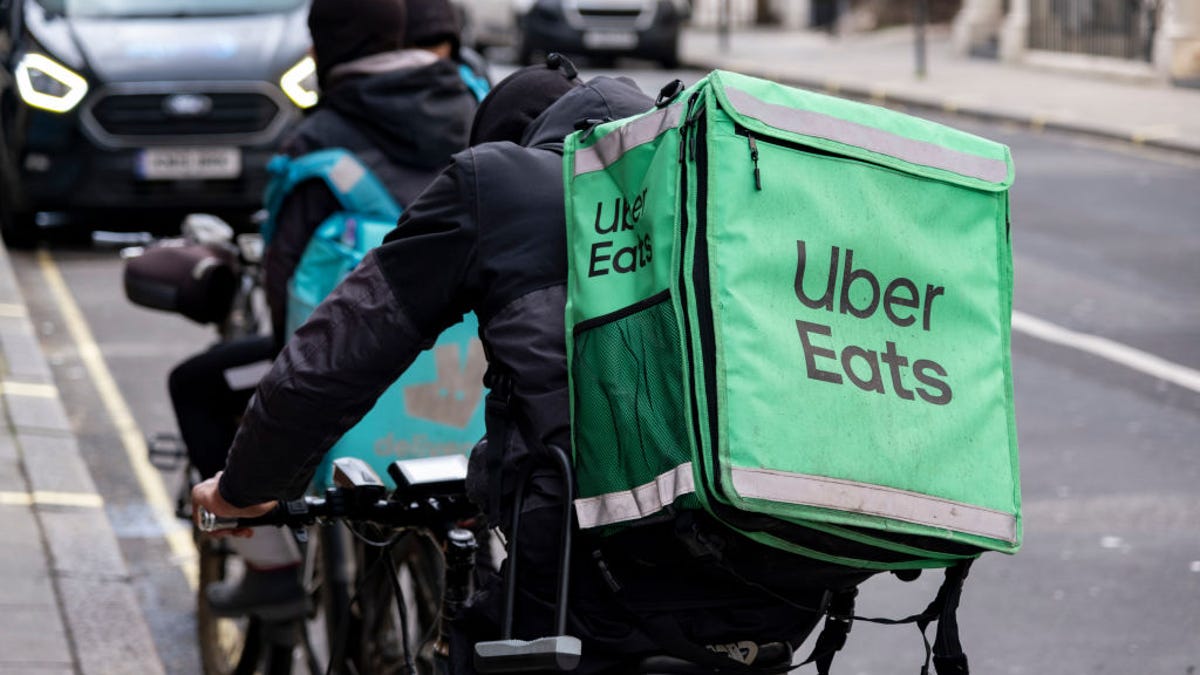
Your Friday post-work Uber Eats order is going to get a whole lot greener – and we don’t necessarily mean in the healthy food sense. Uber on Thursday announced a slew of product updates, all designed to help the company meet its climate commitments while helping Uber users make more planet-friendly choices.
The convenience and fun of ordering food through a delivery app make Uber Eats and its competitors an attractive proposition for those nights you fancy something different for dinner, or just don’t have the energy to cook. But those deliveries have an environmental cost. The carbon footprint of households that spend £50 (roughly $63) per week on food delivery services is 450% higher on average than those that don’t, according to research from CNET’s sister site USwitch in 2021.
Now Uber is committing to slashing the carbon emissions of those deliveries, so you can keep enjoying your takeout without putting pressure on the climate. The company promises that, by 2040, 100% of couriers will use zero-emissions vehicles and that, by 2030, 100% of restaurants on its app will use sustainable packaging. Bringing in this change will be a major challenge, said Uber CEO Dara Khosrowshahi at Uber’s sustainability event in London, but one the company hopes other services and restaurants will join in with.
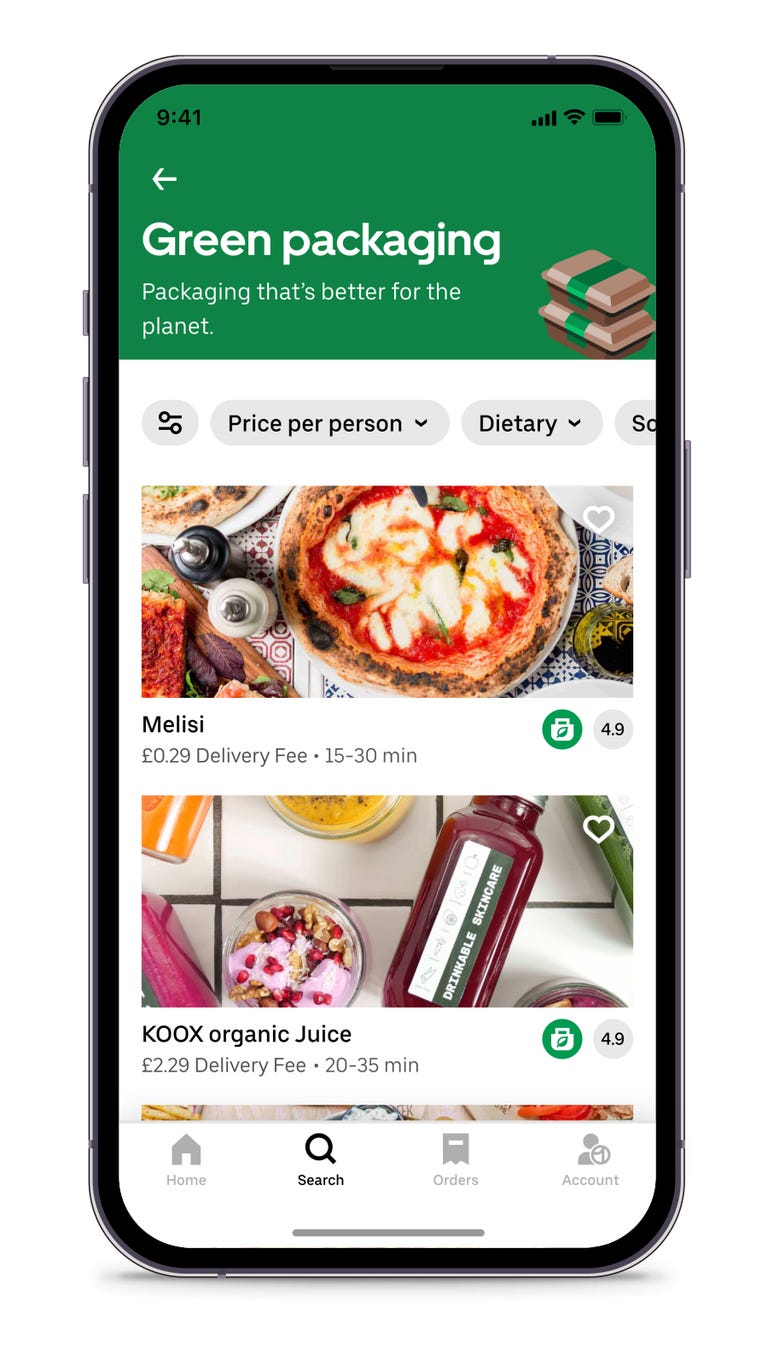
Uber Eats’ new filter.
«Tackling plastics and waste is a whole new ballgame for us,» he said. «We’re the first global delivery platform to set this kind of goal to go green, but we certainly should not be the last.»
Recognizing that the cost of sustainable packaging can still be prohibitively expensive for restaurants, the company is also partnering with the World Wildlife Fund, among others, to research how it can work with restaurants to make green packaging options more affordable.
To make it easier for you to do your part, Uber will provide a new option in the Uber Eats app that will allow you to filter restaurants by those that offer green packaging options – whether that be recyclable, reusable or compostable.
Greener rides
As a company that relies heavily on car use, Uber acknowledges it’s only right that it set ambitious sustainability goals for itself. With the impacts of human-caused climate change being felt all over the world in the form of wildfires, droughts and extreme weather events, the company is committed to switching its fleet to electric vehicles in order to reduce the amount of carbon its service pumps out.
More than 60,000 Uber drivers were in electric vehicles as of last month, said Khosrowshahi – three times as many as a year ago. The company wants all of its drivers to make the transition to EVs, but this is another huge challenge for Uber, given that many drivers find the cost of electric cars prohibitively expensive.

Some drivers want Uber to pay for EVs.
Outside of the London event on Thursday, a small group of Uber drivers, numbering fewer than 10, were protesting the company’s «greed» and its policies, which they claimed center profits over driver income. If Uber wants drivers to buy electric vehicles, it should shoulder the costs itself, said Abdurzak Hadi, who has been driving for Uber since 2014.
«If I have to pay for it, the fares should rise up,» he said. «There’s inflation in the country and everything has gone up, but our fares have gone down.»
On stage, Khosrowshahi addressed the difficulties around switching to electric vehicles. «EVs are still too expensive, charging is still too confusing,» he said. «What we need to accomplish is to make it absolutely effortless.»
Uber says it’s expanding partnerships designed to bring down those costs for drivers, as well as educating them on the total cost efficiency through a hub on the driver app. It’s also providing drivers with a suite of new tools to help ensure charging is as efficient and convenient as possible for them.
On the rider side, Uber is making it easier for you to understand and reduce your environmental impact. Starting this week you’ll be notified when you’re on an eco-friendly route, and from later this year you’ll be able to see in your Uber app any carbon emissions savings you’ve made by using the Uber Green service to travel in an electric vehicle.
The company has just expanded Uber X Share to 18 new cities and has rebranded Car Next Door, an Australian car-sharing platform it owns, as Uber Car Share, with an imminent North America launch planned for Boston and Toronto.
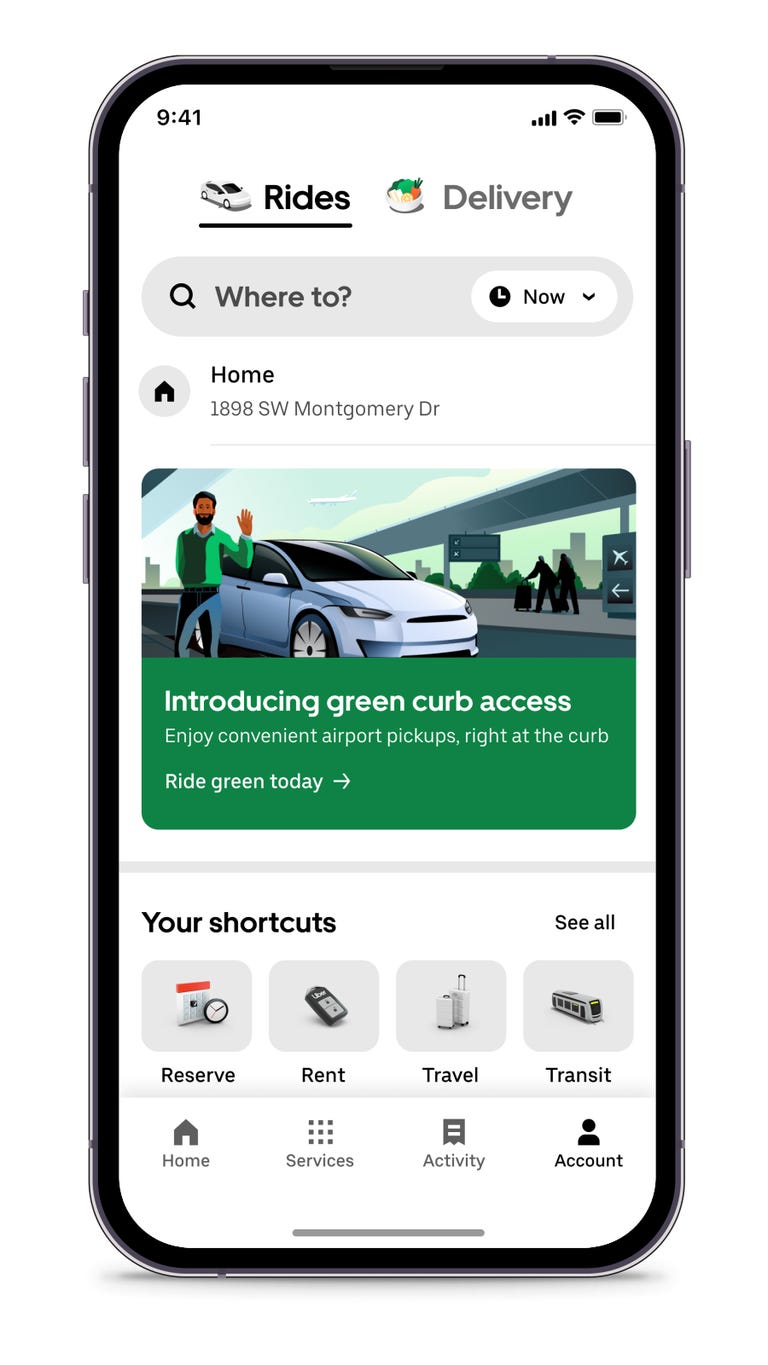
Coming to an airport near you soon.
In recognition of the fact that around 15% of all Uber rides are trips to and from an airport (making them longer than the average Uber ride, with higher emissions), the company also plans to incentivize you to pick Uber Green over Uber X with a number of perks. These include lower fares and exclusive access to curbside pickup zones and other preferred areas. In some locations, drivers on these routes will also have access to discounted or free fast chargers to juice up their electric vehicles.
Initially, Uber’s airport partners will include Portland (PDX), Phoenix (PHX), London Heathrow (LHR) and Madrid (MAD), although it eventually hopes that green perks will be available at all airports it provides rides to and from.
Uber is also hoping its policies will feed into the electric vehicle revolution more broadly, said Khosrowshahi. The company is responsible for providing many people with their first experience of riding in an EV, he said. «And the first time that you try electric, you become much more likely to try an electric vehicle in your personal life, whether it’s buying an electric vehicle, or electing to use Uber Green whenever you use the service.»
Technologies
Fubo Loses NBCUniversal Channels, Putting Your NBA Games in Jeopardy
Sound the carriage dispute Klaxon: Some network programming has disappeared from the streaming service after content negotiations fell through.
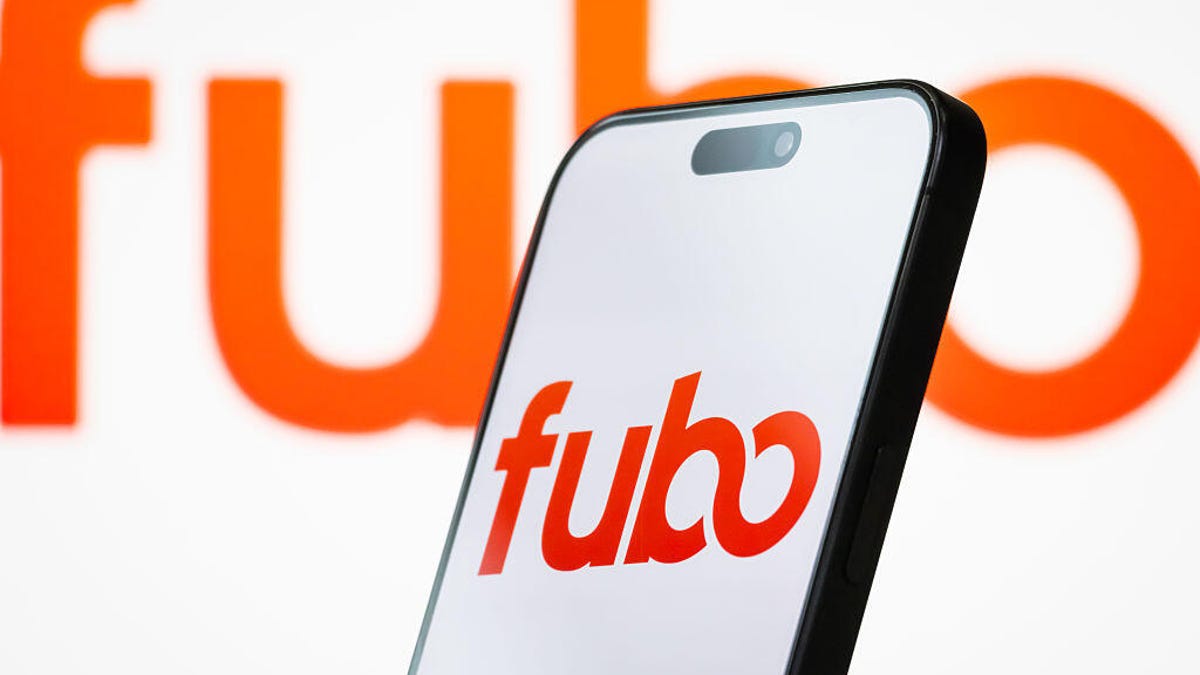
If you’ve noticed your favorite show has recently gone missing from Fubo, it’s probably because an entire block of programming just disappeared from the site’s channel lineup.
The live TV streaming service is engaged in a carriage dispute with NBCUniversal, a media company whose subsidiaries include NBC News, Universal Studios, Peacock, Telemundo and Illumination, among other brands.
On Nov. 21, NBCUniversal pulled all of its networks from Fubo. This is an especially big deal for sports watchers on the streaming service, since the Fubo Sports subscription — which began earlier this year — depends on the licensing agreement with NBCUniversal. However, viewers can still access sports content on networks like ESPN, CBS and ABC.
Fubo released a statement on Tuesday, alleging the media giant is engaging in «discriminatory tactics» that are harming the streamer’s subscribers.
«NBCU is discriminating against Fubo and our subscribers,» the statement says. «They allowed YouTube TV and Amazon Prime to integrate Peacock directly into their channel store, but refused to give Fubo the same rights.»
Don’t miss any of our unbiased tech content and lab-based reviews. Add CNET as a preferred Google source.
Fubo says NBCUniversal is trying to force a multiyear deal for certain channel packages under the media giant’s new spin-off media company, Versant, and that it’s trying to upcharge on the Fubo Sports subscription by adding «expensive, non-sports channels» into the agreement, increasing the cost.
According to NBCUniversal’s website, the Versant brands include CNBC, E!, MS Now, SyFy and USA, among other channels.
NBCUniversal did not respond to a request for comment.
Fubo says that it’s willing to move forward without NBCUniversal content if an agreement cannot be reached.
«Fubo is committed to bringing its subscribers a premium, competitively-priced live TV streaming experience with the content they love,» its statement concludes. «That includes multiple content options, including a sports-focused service, that can be accessed directly from the Fubo app.»
Fubo recently became an affiliate of The Walt Disney Company, following its merger with Hulu’s live TV platform in October. It’s unclear whether this merger affected content agreement negotiations with NBCUniversal. Fubo did not respond to a request for comment on this.
Technologies
Spotify Will Reportedly Get More Expensive in the US Next Year. Here’s What to Expect
The music streaming service will reportedly raise prices again after subscription rate hikes in other regions.

After announcing it is raising prices in regions including Europe, South Asia and Latin America, Spotify is reportedly about to increase prices again in the US.
The US is included in the latest Spotify price hike on its Premium services starting in early 2026, according to the Financial Times, which cited three sources familiar with the streaming music company’s dealings. For now, the least expensive Premium plans in the US start at $12, but the price hike would likely put it in line with the other regions where the Premium plan costs about $14 a month.
Don’t miss any of our unbiased tech content and lab-based reviews. Add CNET as a preferred Google source.
Spotify also offers a Premium Family plan that covers six people in the same household for $20 and plans for students ($6 a month bundled with Hulu) and couples ($17 a month). Spotify also offers a Basic plan that does not include access to audiobooks for $11 a month. A representative for Spotify did not immediately respond to a request for comment.
A steady increase
If the report is accurate, this would be the third price increase on Premium plans in the US since 2023. Before those hikes, Premium plans were $10, but Spotify raised its minimum price by $1 in 2023 then again in 2024.
Just this week, Spotify added the ability to seamlessly import playlists from other music services including Apple Music and Tidal.
Spotify has faced some controversy this year, including some music acts abandoning the platform and some customers canceling subscriptions over advertising for Homeland Security’s ICE program. CNET has a guide for canceling your Spotify subscription.
The company is the market leader among music streaming apps with about 32 percent market share as of the end of 2024.
Technologies
Some Rad Power Bike E-Bike Batteries Can Catch Fire, Consumer Protection Agency Warns
The company declined to offer full replacements or refunds, citing financial constraints.
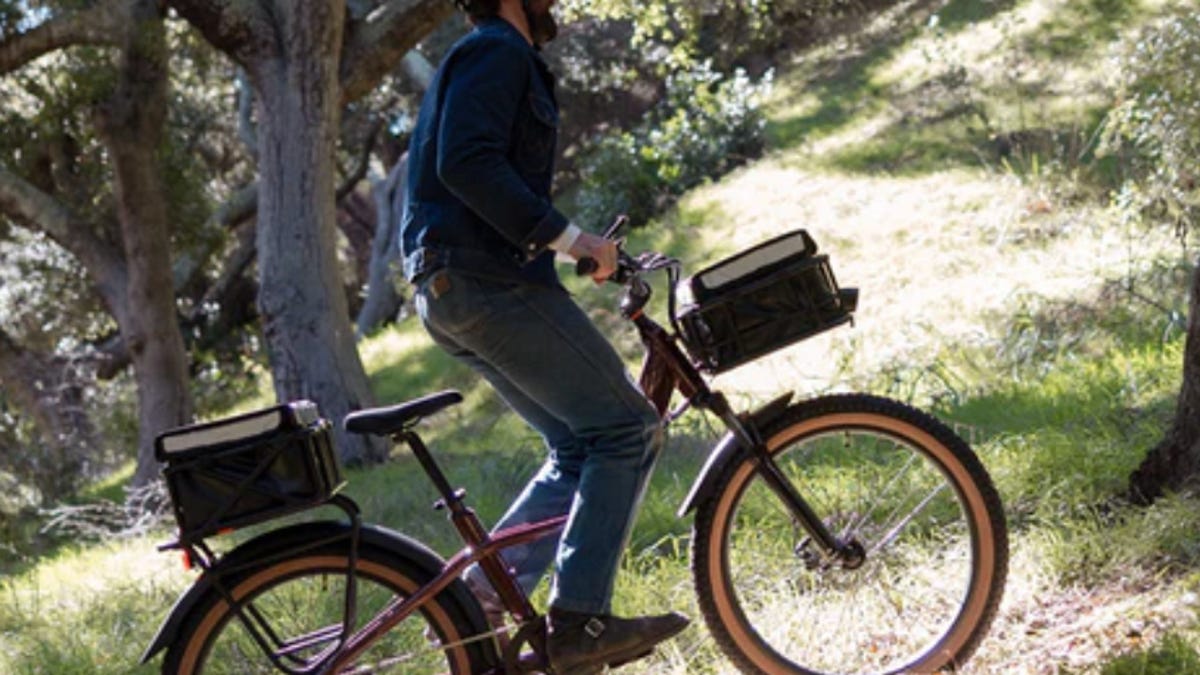
The US Consumer Product Safety Commission is warning that some lithium‑ion batteries used in certain e‑bikes made by Rad Power Bikes pose a serious fire hazard that could lead to injury or even death. The agency says the batteries, identified by model numbers RP‑1304 and HL‑RP‑S1304, can unexpectedly ignite or explode, especially if the battery or its harness has been exposed to water or debris.
The recall has been marked as a «public health and safety finding» because Rad Power Bikes has declined to offer full replacements or refunds for all consumers, citing financial constraints.
CPSC reports 31 incidents of fire involving these batteries, including 12 cases where property damage totaled approximately $734,500. Some of these fires occurred even when the battery was not in use or charging, but was in storage.
Don’t miss any of our unbiased tech content and lab-based reviews. Add CNET as a preferred Google source.
The batteries were sold as either original or replacement units for several Rad Power Bikes e-bike models and were available through RadPowerBikes.com, Best Buy and independent bike shops nationwide.
«Rad informed the agency that its demand to replace all batteries, regardless of condition, would immediately put Rad out of business, which would be of no benefit to our riders,» the company said in a statement issued with the CPSC warning. «Rad is disappointed that it could not reach a resolution that best serves our riders and the industry at large. Rad reminds its customers to inspect batteries before use or charging and immediately stop using batteries that show signs of damage, water ingress, or corrosion, and to contact Rad so we can support our riders.»
The CPSC’s statement does not apply to all Rad batteries, and does not apply to its Safe Shield or semi-integrated batteries.
Consumers who have one of the affected batteries are urged to stop using it immediately and dispose of it properly via a household hazardous‑waste collection center. Do not place the batteries in standard curb-side recycling or trash bins, and refrain from reselling them.
-

 Technologies3 года ago
Technologies3 года agoTech Companies Need to Be Held Accountable for Security, Experts Say
-

 Technologies3 года ago
Technologies3 года agoBest Handheld Game Console in 2023
-

 Technologies3 года ago
Technologies3 года agoTighten Up Your VR Game With the Best Head Straps for Quest 2
-

 Technologies4 года ago
Technologies4 года agoBlack Friday 2021: The best deals on TVs, headphones, kitchenware, and more
-

 Technologies4 года ago
Technologies4 года agoVerum, Wickr and Threema: next generation secured messengers
-

 Technologies4 года ago
Technologies4 года agoGoogle to require vaccinations as Silicon Valley rethinks return-to-office policies
-

 Technologies4 года ago
Technologies4 года agoOlivia Harlan Dekker for Verum Messenger
-

 Technologies4 года ago
Technologies4 года agoiPhone 13 event: How to watch Apple’s big announcement tomorrow
